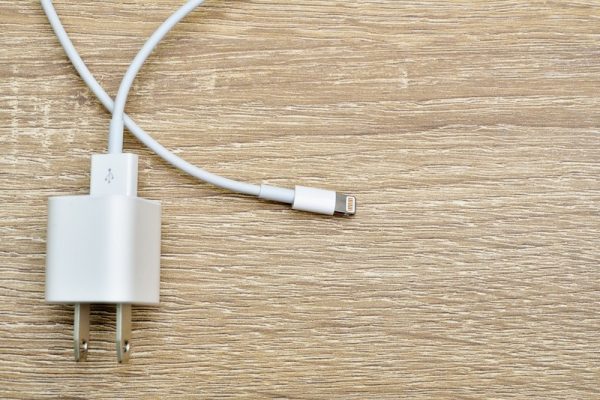Easy fixes if your iPhone is charging slowly

Your iPhone is your portal to just about everything. You use it to communicate with your friends and relatives, for documenting your life with videos and photos, and for browsing the web. You can use it to pay for goods and services and for managing your bank accounts.
You read books, play games, videos or music on it to pass the time when you’re out and about. It’s quite amazing that a small gadget like an iPhone can do just about anything!
However amazing as it sounds, your iPhone is useless when it runs out of juice. I know it can be quite stressful when that battery level indicator hits red and there’s no charger nearby.
But you know what’s worse? When there’s actually a charger available, but your iPhone charges slowly or not at all.
Waiting for an iPhone to charge up in longer than average times is no fun. Having it tethered to a charger for what seems forever could mean missed appointments, unread messages and unanswered calls, not to mention the general anxiety caused by having an unreliable battery.
Before you rush out to have your iPhone serviced by a repair shop, here are a few troubleshooting tips you should try out first. Maybe all it takes is a little extra tender loving care to get your iPhone’s charging sessions up to speed again.
1. Check your cable

Think about it, your charging cable probably gets the most abuse among all your charging accessories. It gets stretched, bent, stepped on, twisted and knotted all the time. It’s usually the weakest link in your charging chain and it’s the first point of failure so I recommend checking it first.
If moving or twisting the cable around fixes the issue, then there’s something definitely going on with your cable. Check for any fraying or bent areas. Charging cables are most susceptible to damage around the area where the cable connects to the plug so check if those ends are bent or out of shape.
Also, inspect your cable for stripped or bare sections where the internal wire is exposed. These could not only lead to charging issues but they are fire and electrical hazards as well.
If you do have a cable that’s out of shape, replace it promptly but make sure the replacement cable is an Apple-certified product. Be careful, watch out for these signs of counterfeit products.
Still not working? Then your charging brick might be the culprit.
2. Check your charger

Next order of business, check your charger brick. Try plugging in another gadget (another iPhone or an iPad) preferably with a different cable and see if the brick registers and the gadget starts charging.
If your iOS gadget charges slowly, then your charger could be too underpowered to juice it up normally. Different chargers have different outputs and this will determine how fast they can charge.
For example, iPad chargers, which are rated 12W or 10W, will charge iPhones faster compared to the iPhone’s smaller default 5W charger.
However, using an iPhone charger or a computer’s USB port (computer USB 1.0 and 2.0 ports are a mere 2.5W and USB 3.0 is 4.5W) to charge an iPad (or any other gadget) will be slower.
Word of warning, though. Beware of higher amperage third-party and cheap knock-off chargers, though, due to current inconsistencies, and these may lead to overheating.
If there’s nothing wrong with your charging brick (it charges other gadgets normally and it has the proper wattage), proceed to the next step – that is, cleaning your iPhone’s port.
3. Clean your port

Spoiler alert. Your iPhone’s Lightning connector is not dust-and-lint-proof. Although the port itself is very durable, dirt, lint and gunk can build up over time, especially if you carry your iPhone around in your pocket all the time.
One common symptom of having a dirty charging port is inconsistency. If unplugging and plugging the cable back in works sometimes or if your iPhone connects and disconnects randomly, then that’s a common sign that your charging port needs a bit of cleaning.
First of all, tempting as it sounds, don’t use compressed air to try and force the dust and lint out. This can actually aggravate the problem by pushing the dirt further inside.
What you can do is get a round-tip toothpick (the softer the better) then simply scoop all the gunk out ever so gently. Use a flashlight to scope out the dirt if you must. A tiny dab of rubbing alcohol on the toothpick’s tip can also do wonders for loosening up that compacted dirt and lint.
You may have to gently blow into the port (the old Nintendo cartridge trick) occasionally to dislodge all the loose dirt but once it’s all nice and clean, try plugging it in again and hope for the best.
Worst case scenario: Get it repaired
So you’ve done all the steps above but unfortunately, your iPhone still charges slowly or not at all. Then most likely, it has a hardware issue. It could be a defective battery or contacts on its internal board are corroded or cracked.
In this case, contact Apple support for your repair options. If your iPhone is still under warranty or has extended Apple Care+ coverage, you could have it repaired and replaced at no extra cost to you.
What’s draining your iPhone battery once and for all
If your iPhone’s battery keeps getting red-lined before the day is even over, there are a few tweaks you can do to help it along. Here are functions in your smartphone that you don’t necessarily need and turning them off can do wonders for your battery life.
Tags: accessories, Apple, Apple iPhone, battery, computer, speed
